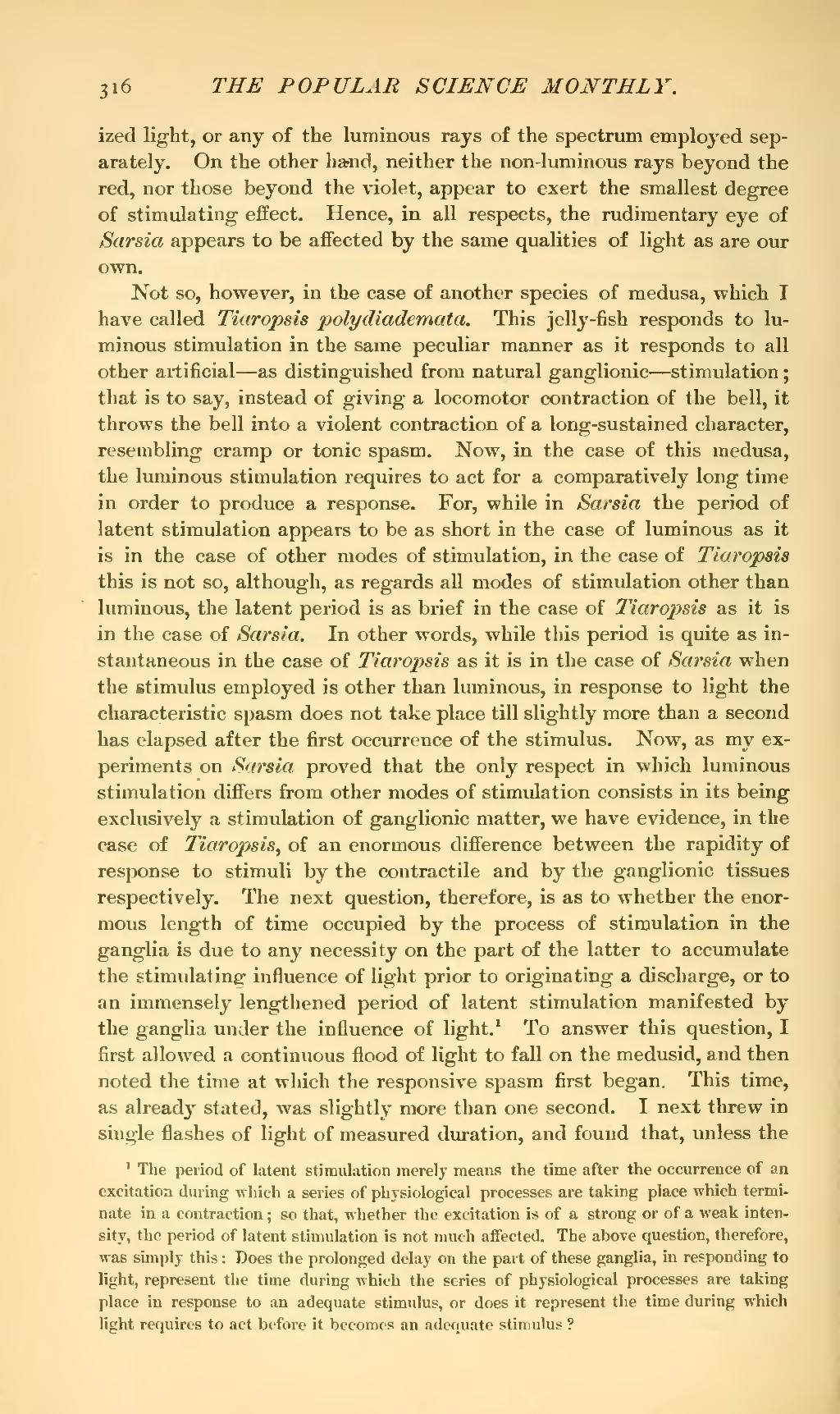ized light, or any of the luminous rays of the spectrum employed separately. On the other hand, neither the non-luminous rays beyond the red, nor those beyond the violet, appear to exert the smallest degree of stimulating effect. Hence, in all respects, the rudimentary eye of Sarsia appears to be affected by the same qualities of light as are our own.
Not so, however, in the case of another species of medusa, which I have called Tiaropsis polydiademata. This jelly-fish responds to luminous stimulation in the same peculiar manner as it responds to all other artificial—as distinguished from natural ganglionic—stimulation; that is to say, instead of giving a locomotor contraction of the bell, it throws the bell into a violent contraction of a long-sustained character, resembling cramp or tonic spasm. Now, in the case of this medusa, the luminous stimulation requires to act for a comparatively long time in order to produce a response. For, while in Sarsia the period of latent stimulation appears to be as short in the case of luminous as it is in the case of other modes of stimulation, in the ease of Tiaropsis this is not so, although, as regards all modes of stimulation other than luminous, the latent period is as brief in the case of Tiaropsis as it is in the case of Sarsia. In other words, while this period is quite as instantaneous in the case of Tiaropsis as it is in the case of Sarsia when the stimulus employed is other than luminous, in response to light the characteristic spasm does not take place till slightly more than a second has elapsed after the first occurrence of the stimulus. Now, as my experiments on Sarsia proved that the only respect in which luminous stimulation differs from other modes of stimulation consists in its being exclusively a stimulation of ganglionic matter, we have evidence, in the case of Tiaropsis, of an enormous difference between the rapidity of response to stimuli by the contractile and by the ganglionic tissues respectively. The next question, therefore, is as to whether the enormous length of time occupied by the process of stimulation in the ganglia is due to any necessity on the part of the latter to accumulate the stimulating influence of light prior to originating a discharge, or to an immensely lengthened period of latent stimulation manifested by the ganglia under the influence of light.[1] To answer this question, I first allowed a continuous flood of light to fall on the medusid, and then noted the time at which the responsive spasm first began. This time, as already stated, was slightly more than one second. I next threw in single flashes of light of measured duration, and found that, unless the
- ↑ The period of latent stimulation merely means the time after the occurrence of an excitation during which a series of physiological processes are taking place which terminate in a contraction; so that, whether the excitation is of a strong or of a weak intensity, the period of latent stimulation is not much affected. The above question, therefore, was simply this: Does the prolonged delay on the part of these ganglia, in responding to light, represent the time during which the series of physiological processes are taking place in response to an adequate stimulus, or does it represent the time during which light requires to act before it becomes an adequate stimulus?
